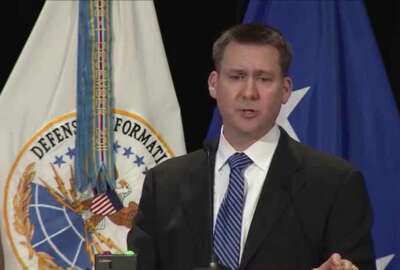
DoD tries to clear its cloud fog
Tom Temin outlines why recent cloud strategies released by the Defense Department read more like a way of backing into what the department has already been doing in...
Like many federal agencies have done, Federal News Network has undergone a major technology upgrade. It came in connection with a move to a new building space, along with our sister operation WTOP. The old technology infrastructure worked okay, but it was the crumbling building we occupied that prompted the move. Now we’re in highly functional and snazzy new quarters.
My colleagues and I have spent the last few days learning the new operating systems, while our techies and contractors have been working ’round the clock to squash the myriad little bugs that always accompany these moves. It takes a little while to return to full productivity.
In the meantime a couple of things crossed my desk, so to speak, that caught my eye.
One is an unclassified, Feb. 4 memo from Patrick Shanahan, acting Defense Department secretary. It purports to establish a cloud computing strategy for DoD. The 18-page strategy was followed by a press release from Dana Deasy, DoD chief information officer. I guess it’s a strategy, but it reads more like a way of backing into what the department has already been doing in cloud computing.
It was a slightly strange document. I thought DoD already had a cloud strategy. It’s certainly had plenty of cloud procurements. And it’s built several of its own clouds or cloud-like data centers in recent years, such as MilCloud 2.0 and earlier software development clouds at the Defense Information Systems Agency. The armed services too are moving along on their own cloud strategies.
Related Stories

Oracle lawsuit claims DoD’s JEDI contract violates law on 7 counts
Reading between the lines it seems like Shanahan and Deasy are trying to justify the JEDI approach. That is, all the $10 billion will go to a single winning vendor. Some in the industry feel JEDI is wired to Amazon Web Services. Oracle Corp. protested on this ground but lost at the Government Accountability Office. It currently has a new suit in the Court of Federal Claims.
In the strategy, Shanahan emphasized the seeming supercomputer-like capabilities of the cloud for hosting artificial intelligence applications. Super-computing people will disagree. More compelling is Shanahan’s case for spending control that goes with on-demand computing.
Shanahan also wrote that the department lacks in-house skill in cloud understanding, testing and security evaluation. He said “decisions are being made at high levels without in-house technical expertise as advisors. The department must invest in its own future by building technical knowledge within.”
That makes sense. DoD wouldn’t buy anything else strategic without in-house expertise. But it inadvertently raises the possibility that the staff the department does have could be led on by a given would-be contractor.
Copyright © 2025 Federal News Network. All rights reserved. This website is not intended for users located within the European Economic Area.
Tom Temin is host of the Federal Drive and has been providing insight on federal technology and management issues for more than 30 years.
Follow @tteminWFED





